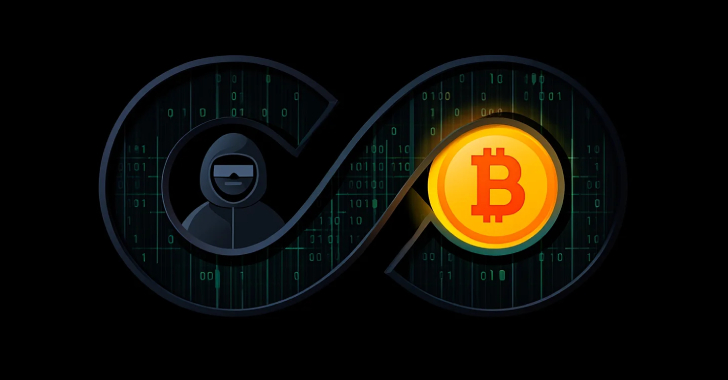Efficient communication is a cornerstone of business success. Internally, making sure your team communicates seamlessly helps you avoid friction losses, misunderstandings, delays, and overlaps. Externally, frustration-free customer communication is directly correlated to a positive customer experience and higher satisfaction.
However, business communication channels are also a major target for cybercriminals. In recent years, especially since the pandemic, the number of cyberattacks has skyrocketed. Statistics show that last year alone, the number of hacks shot up by 38%. Worse, it still takes a business 277 days on average to identify a breach, causing a loss of $4.35 on average.
So, how can businesses safeguard their communication channels against hackers, while still providing the best possible experience for customers and maintaining team productivity? Here’s everything you need to know – and which mistakes you need to avoid.
Use Secure Platforms
To begin with, there is your choice of communication channels. In order to meet customers’ communication demands, you’ll need to offer a variety of channels, from texting, email and live chat to voice and video calls. Not to mention the channels for internal business communication, messaging, and team collaboration tools foremost among them.
In the choice of all these channels, you need to prioritize security. When comparing communication platforms, whether UCaaS providers or contact center software, it’s crucial to take their security standards into account.
Have they been breached before? What server infrastructure and encryption do they rely on? What cybersecurity protocols do they implement? Do they comply with international data security regulations? Do they offer additional security measures such as two-factor authentication?
All these are questions you should find the answers to before settling for any communication platform for your business.
Audit Your Passwords and Permissions
Next up, your business needs to audit its passwords and review which team members have which permissions.
Incredible as it may sound, statistics show that a vast majority of data breaches (fully 80%!) are due to compromised login credentials. They also reveal that 75% of people do not adhere to password best practices, despite knowing better.
In fact, “123456”, “password”, and “admin” still remain on the list of the most frequently used passwords in 2024.
Increasing password complexity dramatically reduces the risk of successful cyber breaches. That’s why a thorough password review and the implementation of draconic password standards should be high up on your list of priorities to safeguard your business communications.
As for the review of permissions, the more people have access to a system, the more likely it is that someone will make a mistake that could result in a breach. Make sure that only those people who really need it have access to sensitive information.
Invest in Cybersecurity Protection
Another strategy to protect your business communications against hackers is to invest in cybersecurity tools.
With the skyrocketing rates of cyber crime and the adoption of technologies such as AI by hackers, cybersecurity companies have ratcheted up their efforts to provide tools to fend them off.
Review what cybersecurity tools your company uses. A solid antivirus system, a Virtual Private Network (VPN) solution and a (team) password manager or vault combined with a strong password policy should be the absolute minimum.
Going further, you can invest in financial fraud monitoring, identity theft monitoring for your team members, as well as spam call protection.
Cybersecurity monitoring tools, especially, are underutilized by businesses – a major reason for the often months-long delay in detecting a breach. In the event of a hack, it is crucial that you detect it as soon as possible in order to be able to limit the damage and loss of customer trust.
Brush Up Your Team’s Cybersecurity Skills
The vast majority of successful cyber breaches are due to human error and not just the choice of weak passwords.
Phishing attacks in particular have become more sophisticated in recent years. Long gone are the days in which a Nigerian prince stuck at an airport reached out for a loan.
Instead, you get an email from your supervisor towards the end of the business day because he needs your login credentials for a high-level operation.
Or you get a message on Slack from a colleague two departments over with a link to sign the virtual birthday card for Sarah from accounting.
If hackers really go above and beyond, you might even get a call from your company’s CEO asking for your help with a technical issue.
In all these cases, many wouldn’t think twice about handing over information or clicking the link they’re sent, without thinking about spear or voice phishing. And today, that’s all it takes to throw the door wide open for cybercriminals to make their way quietly into your communication systems.
To prevent any of these scenarios from happening, you need to brush up your team’s cybersecurity skills – and their capacities to detect and flag fraud. Having regular cybersecurity training is crucial, as is doing spot checks to make sure everyone adheres to best practices.
Develop SOPs and a Cybersecurity Routine
Finally, to protect your business’ communication channels from hackers, it’s essential to develop standard operating procedures and a fixed cybersecurity routine.
Your SOPs should cover not only how to protect your systems, but also what to do in the event of a breach, or the suspicion of one. All your team members should be able to spot suspicious activity and know exactly who to reach out to in the event that they do.
Who do they need to alert if they get a spear phishing message to their work phone?
What’s the procedure if databases are behaving oddly?
Which systems need to be shut down first to contain a potential breach?
All these are questions that need to be clarified and communicated to your team.
Similarly, uncomfortable as it is, you also need to develop backup plans for the worst case scenario of a successful breach. What’s your strategy to recover your website if it has been taken hostage? And how do you alert customers to a potential threat?
Finally, you need to incorporate cybersecurity into your routines on a daily, weekly, quarterly, and annual basis. Cybercriminals constantly evolve their tactics, and you need to keep up to speed to protect your communications.
This means staying up to date on cybersecurity news, new threats, and scams. It also involves regular changes to your passwords, system reviews, and updates to your SOPs.
Conclusion
Protecting your business communications against hackers is a complex task. It starts with your choice of platforms and cybersecurity tools, but requires constant vigilance. It’s crucial to regularly audit your passwords and permissions, educate yourself and your team, and develop cybersecurity SOPs and routines.
While all of this takes a considerable amount of time, effort, and resources, it is well worth it. The alternative is to leave yourself wide open and vulnerable to attacks that can have serious financial consequences and result in a total loss of customer trust. In that scenario, the question is when – rather than if – you get breached.
Only with the best tools and team members sticking to cybersecurity best practices, and being capable of spotting phishing attacks, will you be able to defend your communication channels.
Note: This expert piece is contributed by Hasan Saleem, a successful serial entrepreneur, investor, and founder of multiple technology and e-commerce startups. He now manages a marketing agency that helps small businesses and startups establish a robust online presence.
Found this article interesting? Follow us on Twitter and LinkedIn to read more exclusive content we post.






